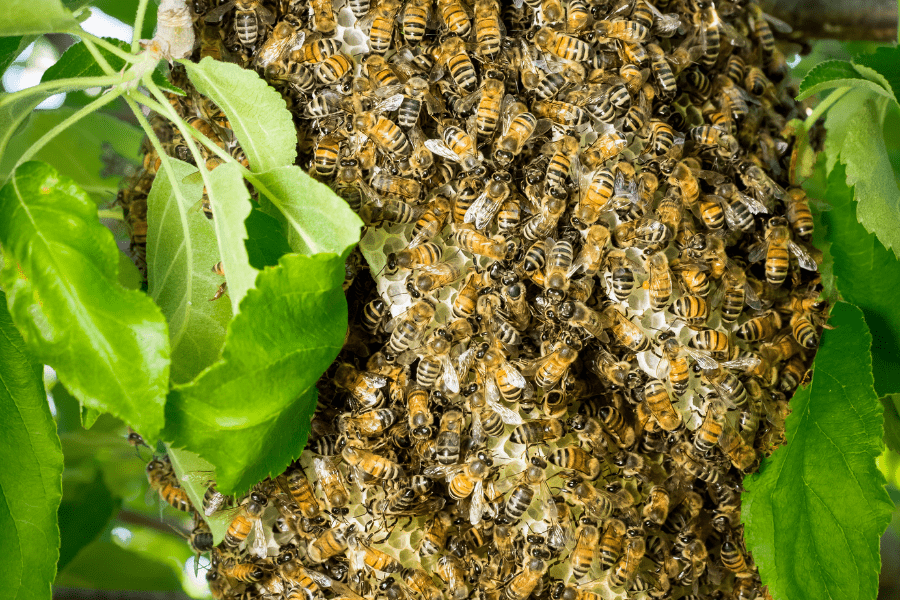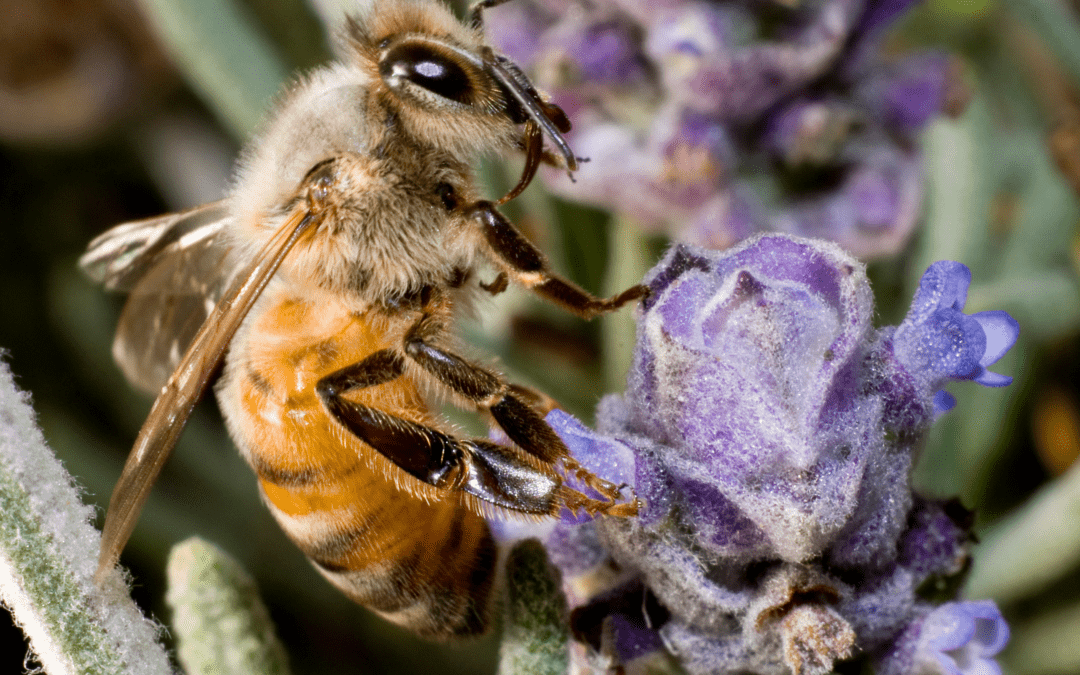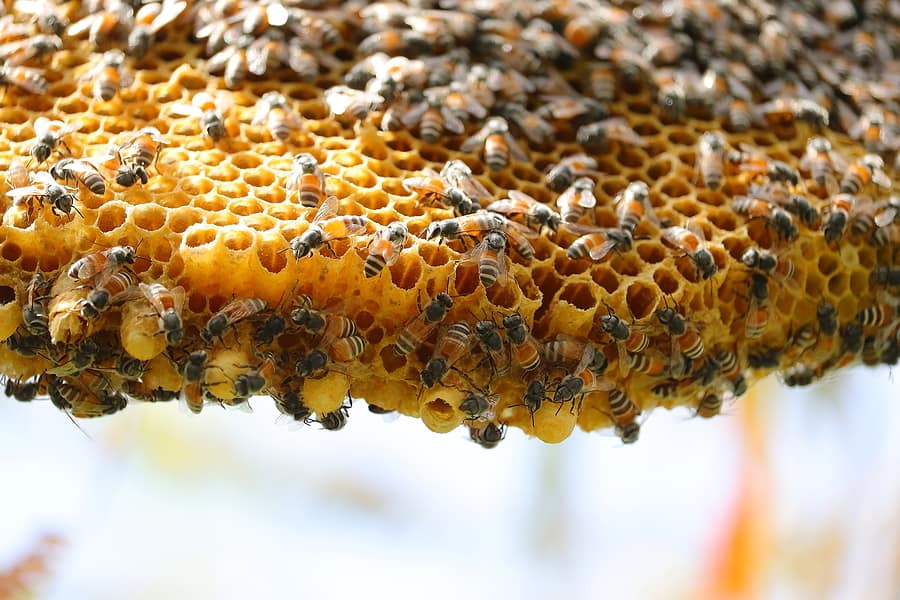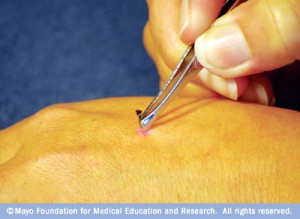READY TO GET STARTED?
REQUEST A FREE ESTIMATE
Fill out the form below or call (888) 466-7849 for a free, no-obligation estimate.

Colony Collapse Disorder (CCD) is a phenomenon that occurs when the majority of working bees in a colony disappear and leave behind the queen, and the rest of the colony. Hives cannot sustain without worker bees and the colony would eventually die. Fortunately, what was once thought to be a major long-term threat to bees, CCD has been reported to have dropped over the last few years.
Some of the best tell-tale signs of CCD are discovering a few dead bees around and near the colony and a lower population of a colony. Another is discovering the queen and young bees remaining with an abundance of honey and pollen reserves. Colony Collapse Disorder isn’t the only reason for a declining colony; here are some other reasons as to why a hive has died:
The honeybee community understands how detrimental it is to discover a colony collapse no matter what the reasoning is. As a homeowner, there are some ways for you to get involved with helping the bees:
If you discover a beehive on or around your property, be sure to reach out to your local certified honeybee removal company to ensure the safety of the hive and colony.

When you’re planning and planting your garden this year, every homeowner should consider adding some plants that attract honeybees to your yard. Allowing honeybees to enter your yard can help assist them with the very important job they have – pollinating. Honeybees alone can pollinate up to 80 percent of all flowering plants, including fruits and vegetables. It’s vital to give them the space they need to complete this task.
Honeybees have incredible ultraviolet vision. They are unable to see the color red but can see colors that are on the ultraviolet spectrum. They can also use odor cues to locate flowers nearby. Many flowers attract bees, including bee balm, echinacea, snapdragon, hostas, and evening primrose. Continue reading to discover which flowers you should plant in your garden next.
These are just a few of the flowers that attract honeybees to your garden to help elevate pollinating. Making sure honeybees have a place to work is important for all humans and the environment. Even planting just one of these plants in your yard is enough to assist the bees.
If you notice a bee colony is nearby and needs to be moved to a safer location, then reach out to your local pest control company that can provide a safe bee relocation.

Honeybees are extremely beneficial to our entire environment for their role in pollination. These bees help with the growth and reproduction of plants and each bee can pollinate more than 100 crops! It’s important to understand why these insects are important and how we can best protect them moving forward.
There are three types of honeybees: adult workers, drones, and the queen. The adult worker bees, who are all female, are all infertile. Their main role in the colony is to collect pollen and nectar. The worker bees do have barbed stingers and, while they aren’t typically aggressive, they will sting if they feel threatened. Drones are male bees and do not have stingers, nor do they collect nectar. Their primary role is to mate with the queen bee. Queen bees are slightly larger than worker bees. The queen bee plays a vital role in the bee colony, as she is the only bee who can produce more honeybees.
Honeybees are active pollinators and will produce honey. Since these insects are the only social insects, their colonies can survive for many years, with an individual colony containing anywhere between 20,000 to 80,000 bees. If the colony’s size gets too large for the available hive space or the queen begins to fail, the bees will start swarming. While these bees aren’t aggressive, they will attack when they feel like their colony is being threatened.
The production of honey by honeybees is extremely important to the environment. Since honey does not have an expiration date, it can be used and reused several times. Honey also has medical benefits, from healing burns to fighting some allergies. Honeybees, as we know, help pollinate crops, which in turn helps us produce and reproduce the plants and food we use to survive.
While bees have positive effects on our environment, some people can be a little wary of them on their property. Protecting these insects is crucial, and it’s recommended that the first and only treatment for these bees is removing and relocating them and their hives by local beekeepers. If you notice you have a honeybee colony on your property, reach out to a pest control company that can provide safe relocation for these insects.
Yellow jackets have barbed like pointers on their stinger that cause the stinger to get lodged into the skin. The stinger is usually left behind, along with the venom sac. It is important to remove a stinger as quickly as possible because venom can continue to be released even if it’s not attached to the bee. The venom can cause an allergic reaction or a possible infection.

Source: Mayo Clinic
Symptoms of infection include:
Consult your Doctor immediately if any of these symptoms occur.
Symptoms of an allergic reaction include:
Consult your Doctor immediately at signs of an allergic reaction.
What to do if stung:
It’s very important to call a pest professional if you believe a yellow jacket nest is near your property. We DO NOT recommend you try to remove this on your own…this could result in being stung.
For yellow jacket removal, wasp removal, and hornet removal, call the professionals at Northwest Exterminating.
Other blogs: How to Treat a Yellow Jacket Sting
We know that bugs are gross and unsanitary but did you also know that they can be bad for our health. WebMD discusses some of the worst bugs and the potential harm they can do to our health:
Tips to prevent feeling the sting of these health issues:
For more information on these insects and their health hazards, visit WebMD: Bad Bugs Slideshow: Identifying Bugs and Their Bites.
If you think you may have been bitten or stung by any of the insects above, please take note of your body’s reaction and seek medical assistance immediately.